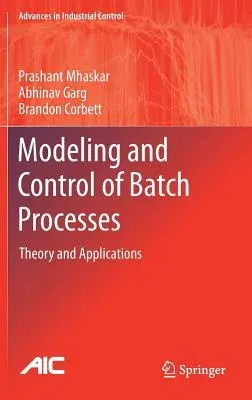Modeling and Control of Batch Processes presents state-of-the-art
techniques ranging from mechanistic to data-driven models. These methods
are specifically tailored to handle issues pertinent to batch processes,
such as nonlinear dynamics and lack of online quality measurements. In
particular, the book proposes:
- a novel batch control design with well characterized feasibility
properties;
- a modeling approach that unites multi-model and partial least squares
techniques;
- a generalization of the subspace identification approach for batch
processes; and applications to several detailed case studies, ranging
from a complex simulation test bed to industrial data.
The book's proposed methodology employs statistical tools, such as
partial least squares and subspace identification, and couples them with
notions from state-space-based models to provide solutions to the
quality control problem for batch processes. Practical implementation
issues are discussed to help readers understand the application of the
methods in greater depth. The book includes numerous comments and
remarks providing insight and fundamental understanding into the
modeling and control of batch processes.
Modeling and Control of Batch Processes includes many detailed
examples of industrial relevance that can be tailored by process control
engineers or researchers to a specific application. The book is also of
interest to graduate students studying control systems, as it contains
new research topics and references to significant recent work.
Advances in Industrial Control reports and encourages the transfer
of technology in control engineering. The rapid development of control
technology has an impact on all areas of the control discipline. The
series offers an opportunity for researchers to present an extended
exposition of new work in all aspects of industrial control.

